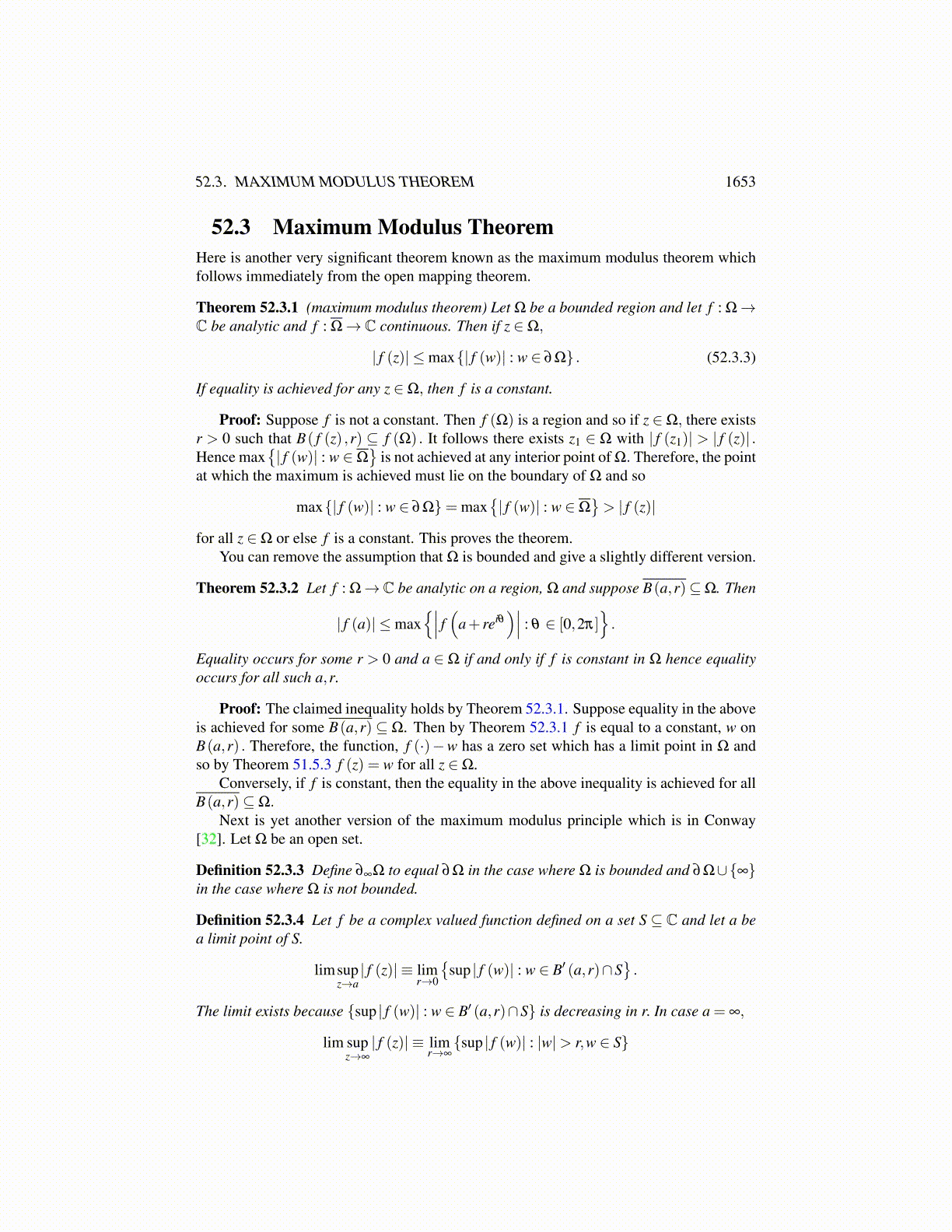
52.2. BRANCHES OF THE LOGARITHM 1653
continuous and so(f−1)′ ( f (z)) = lim
f (z1)→ f (z)
f−1 ( f (z1))− f−1 ( f (z))f (z1)− f (z)
= limz1→z
z1− zf (z1)− f (z)
=1
f ′ (z).
This proves the theorem.One does not have to look very far to find that this sort of thing does not hold for
functions mapping R to R. Take for example, the function f (x) = x2. Then f (R) is neithera point nor a region. In fact f (R) fails to be open.
Corollary 52.1.2 Suppose in the situation of Theorem 52.1.1 m > 1 for the local represen-tation of f given in this theorem. Then there exists δ > 0 such that if w ∈ B( f (z0) ,δ ) =f (V ) for V an open set containing z0, then f−1 (w) consists of m distinct points in V. ( f ism to one on V )
Proof: Let w ∈ B( f (z0) ,δ ) . Then w = f (ẑ) where ẑ ∈V. Thus f (ẑ) = f (z0)+φ (ẑ)m .
Consider the m distinct numbers,{
e2kπi
m φ (ẑ)}m
k=1. Then each of these numbers is in B(0,δ )
and so since φ maps V one to one onto B(0,δ ) , there are m distinct numbers in V , {zk}mk=1
such that φ (zk) = e2kπi
m φ (ẑ). Then
f (zk) = f (z0)+φ (zk)m = f (z0)+
(e
2kπim φ (ẑ)
)m
= f (z0)+ e2kπiφ (ẑ)m = f (z0)+φ (ẑ)m = f (ẑ) = w
This proves the corollary.
52.2 Branches Of The LogarithmThe argument used in to prove the next theorem was used in the proof of the open mappingtheorem. It is a very important result and deserves to be stated as a theorem.
Theorem 52.2.1 Let Ω be a simply connected region and suppose f : Ω→ C is analyticand nonzero on Ω. Then there exists an analytic function, g such that eg(z) = f (z) for allz ∈Ω.
Proof: The function, f ′/ f is analytic on Ω and so by Corollary 51.7.23 there is aprimitive for f ′/ f , denoted as g1. Then
(e−g1 f
)′=− f ′
fe−g1 f + e−g1 f ′ = 0
and so since Ω is connected, it follows e−g1 f equals a constant, ea+ib. Therefore, f (z) =eg1(z)+a+ib. Define g(z)≡ g1 (z)+a+ ib.
The function, g in the above theorem is called a branch of the logarithm of f and iswritten as log( f (z)).